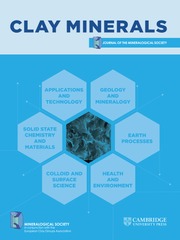Article contents
Chemostratigraphy and provenance of clays and other non-carbonate minerals in chalks of Campanian age (Upper Cretaceous) from Sussex, southern England
Published online by Cambridge University Press: 27 February 2018
Abstract
Geochemical analysis of acid-insoluble residues derived from white chalks and marl seams of Campanian age from Sussex, UK, has been undertaken. All display a broadly similar <2 μm mineralogical composition consisting of smectite or smectite-rich illite-smectite with subordinate illite and minor amounts of talc. Plots of K2O/Al2O3 and TiO2/Al2O3 indicate that most marl seams have an acid-insoluble residue composition which is slightly different to that of the over- and underlying white chalk, implying that marl seams are primary sedimentary features not formed through white chalk dissolution. On the basis of a negative Eu anomaly and trace element geochemistry one marl seam, the Old Nore Marl, is considered to be volcanically derived and best classified as a bentonite; it is considered to correlate with the bentonite M1 of the north German succession.
- Type
- Research Article
- Information
- Creative Commons
- Copyright © The Mineralogical Society of Great Britain and Ireland 2014 This is an Open Access article, distributed under the terms of the Creative Commons Attribution license. (http://creativecommons.org/licenses/by/4.0/), which permits unrestricted re-use, distribution, and reproduction in any medium, provided the original work is properly cited.
- Copyright
- Copyright © The Mineralogical Society of Great Britain and Ireland 2014
References
- 9
- Cited by


